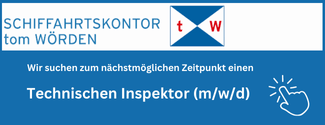Toepfer Transport sees period business for F-type vessels deteriorate / UNCTAD investment outlook sees pick-up in power and electricity projects.
Period charter rates for multipurpose heavy lift ships continued to slide gently over the past months due to subdued project[ds_preview] cargo flows and heightened competition by bulk carriers and container ship operators. According to the latest multipurpose shipping report by Hamburg-based shipbroker Toepfer Transport, the average hire rate for a 12,500 dwt F-type vessel with minimum 240t lifting capacity slipped further to 6,778$/day based on 6–12 months period duration in June. Toepfer’s mpp rate index (based on rate assessments by a panel of shipowners, operators and brokers) has been slipping month after month this year, starting out at almost 7,200$ per day in January. London-based broker Clarksons sees a similar trend, with average 12-month hire rates for larger geared 17,000 dwt and geared 12,000 dwt mpp vessels down 9% and 7% respectively to 7,500$ and 6,500$ over the last three months. Actual fixing activity is dominated by very short employments and time charter trips at slightly higher rates, though, as owners remain wary of committing for too long at today’s depressed levels. Allied Shipping is reported to have fixed a German-owned 9,000 dwt unit with 2 x 60t cranes at 6,500$/day for a trip from WC India to the Persian Gulf while Rickmers-Linie reportedly hired a 12,700 dwt units with 2 x 180t cranes at 6,900$/day from Hansa Heavy Lift for a trip from Europe to Southeast Asia. Intermarine is said to have fixed the 28,000 dwt »Kingfisher« (2 x 120t, 1 x 80t) at very high 8,000’s $ also for a trip from Europe to Asia.
The latest deterioration in mpp earnings comes in the wake of a collapse in dry cargo rates as mirrored by the Baltic Dry Index earlier this year. Part or full loads of minor bulk commodities and general cargoes like steels, which are carried on small bulk carriers, also represent essential cargoes for many multipurpose ship operators. Worse yet, even in their core project cargo business, multipurpose tramp and liner carriers have been increased competition from handy bulk carrier operators as the latter seek additional business to fill their vessels.
»Whilst there is hope that trade with Iran will pick up significantly, it will still take some time for new projects to lead to a noticeable demand for the multipurpose shipping market,« Toepfer Transport comments. Although fundamental improvements for multipurpose vessels were not on the horizon for this year, the second half may see some return of vital project and breakbulk cargoes from the oil drilling industry and its suppliers following the recent recovery in oil prices to almost 50$ per barrel, Toepfer said.
Volume developments in the first six months at the port of Antwerp – Europe’s biggest breakbulk port – were quite sobering. Throughput of conventional breakbulk fell by 1.7% to 4.75mill. t, the Port Authority reported. The decline was mainly due to a fall in pulp and paper volumes and increased containerisation especially of conventional forest products stems spurred by low freights, a spokesman told Hansa.
Concerns over a persistent lack of high-value project cargoes are amplified by the World Investment Report 2016 by the United Nations Conference on Trade & Development. It found that global foreign direct investment flows surged by 38% to 1.76tr. $ in 2015 – their highest level since the global financial/economic crisis 2008/09. But this rise was purely based on a sharp increase in cross-border mergers and acquisitions, »corporate reconfigurations« and intra-company loans with little impact on production and trade, as the UN body pointed out.
The organisation’s data on »greenfield investment projects« – capturing the number and total value of all the projects announced during the year irrespective of their start date and financing status – offers a glimmer of hope, though. It shows that the value of announced projects in power generation, electricity, gas and water supply has begun to trend up I virtually all regions led by developing Asia, Africa and the least developed countries. By contrast, the »primary sector« made up of mining, quarrying and oil & gas production continued its demise in greenfield FDI project announcements last year.
















